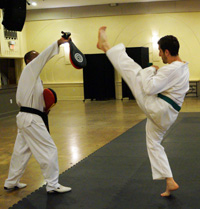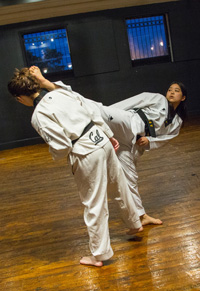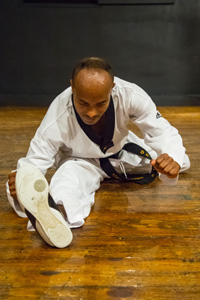Taekwondo
Training to kick and strike increases core strength and leads to improved coordination and balance. Technical progress naturally leads to increased self-confidence, a critical component to effective self-defense. Greater confidence in turn gives trainees the mental space to evaluate their strengths and weaknesses objectively, a process that leads to self-respect and an acceptance of others. With this ultimate goal in mind, our day-to-day training focuses fairly equally on three areas of practice:
- Sparring-related skills applicable to the current World Taekwondo/Olympic competition format.
- Poomsae (pattern practice, or “forms”), taught in line with the current Kukkiwon standards.
- Self-defense techniques.
What should I expect from a typical taekwondo practice?
Taekwondo training is fast-paced and involves various forms of conditioning to develop kicking dexterity and fast footwork. Such exercises are physically taxing by design and may involve moving in unfamiliar ways, so being sore in new places is a distinct possibility at first. Partner practice drills are also quite common, and a degree of contact with other trainees is to be expected. Protective equipment and padded targets are often employed to allow for more intense exercises with heavier contact. Although you may be physically tired after training, our goal is that you feel better at the end of practice than when you walked in the door.


